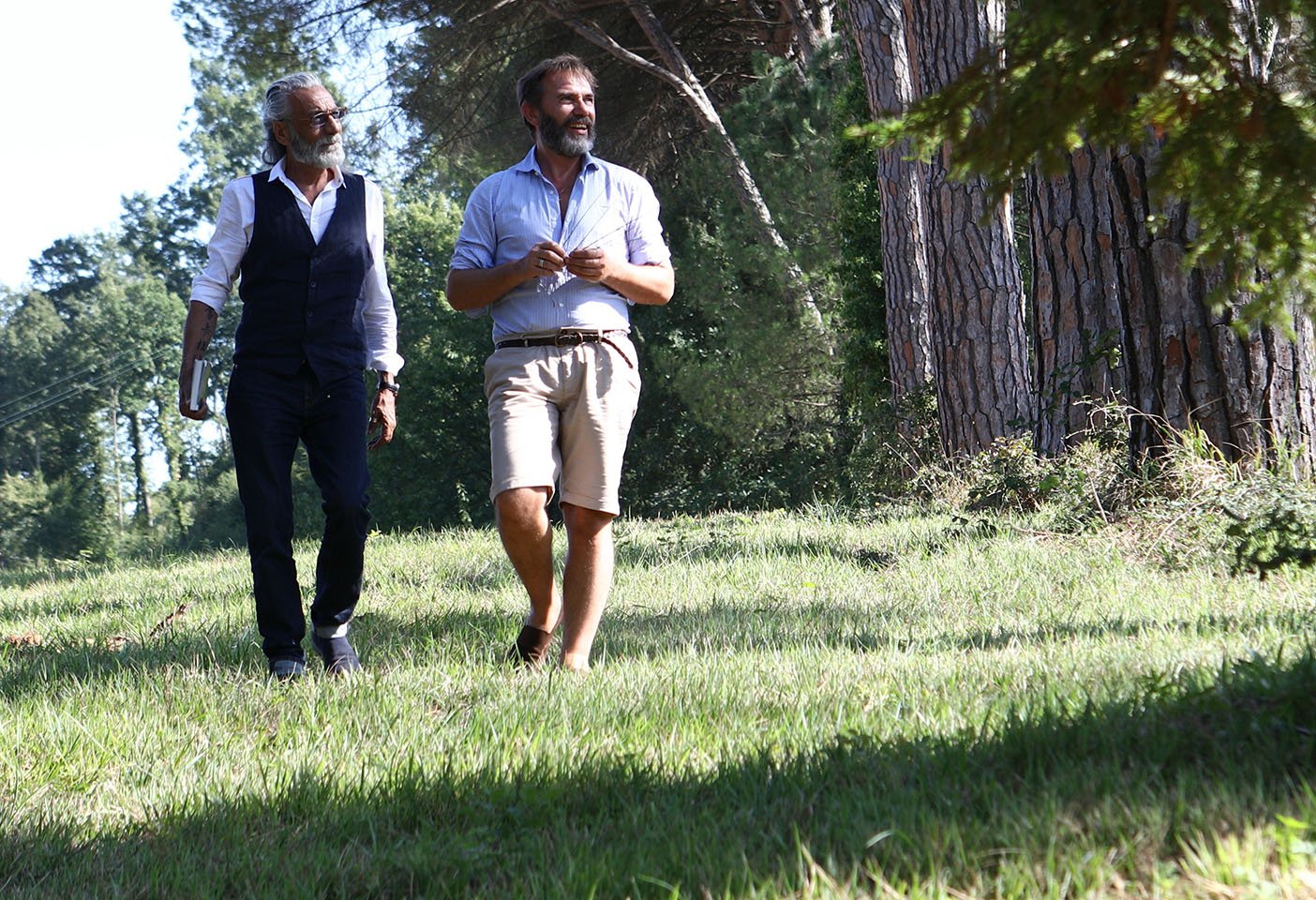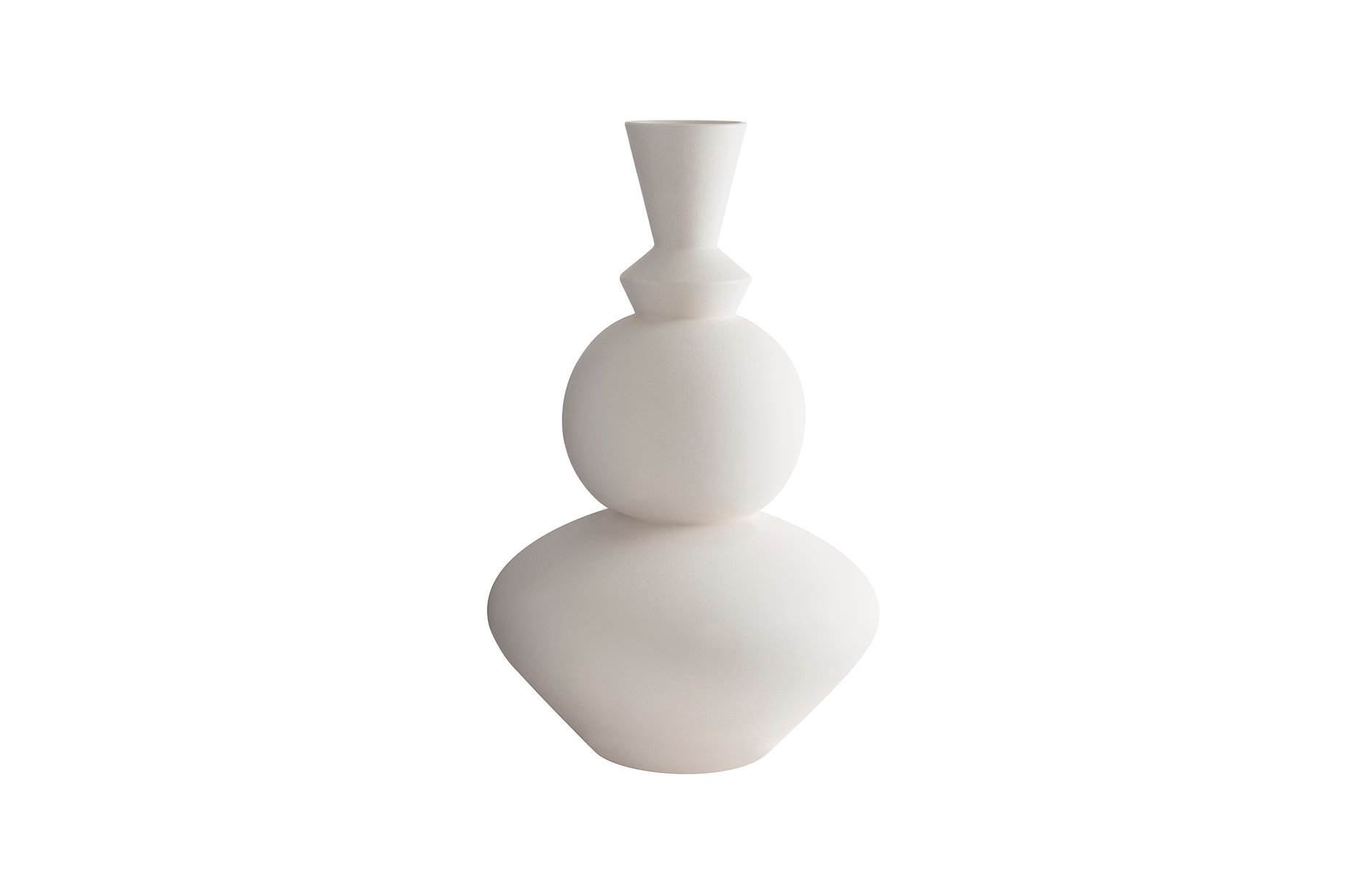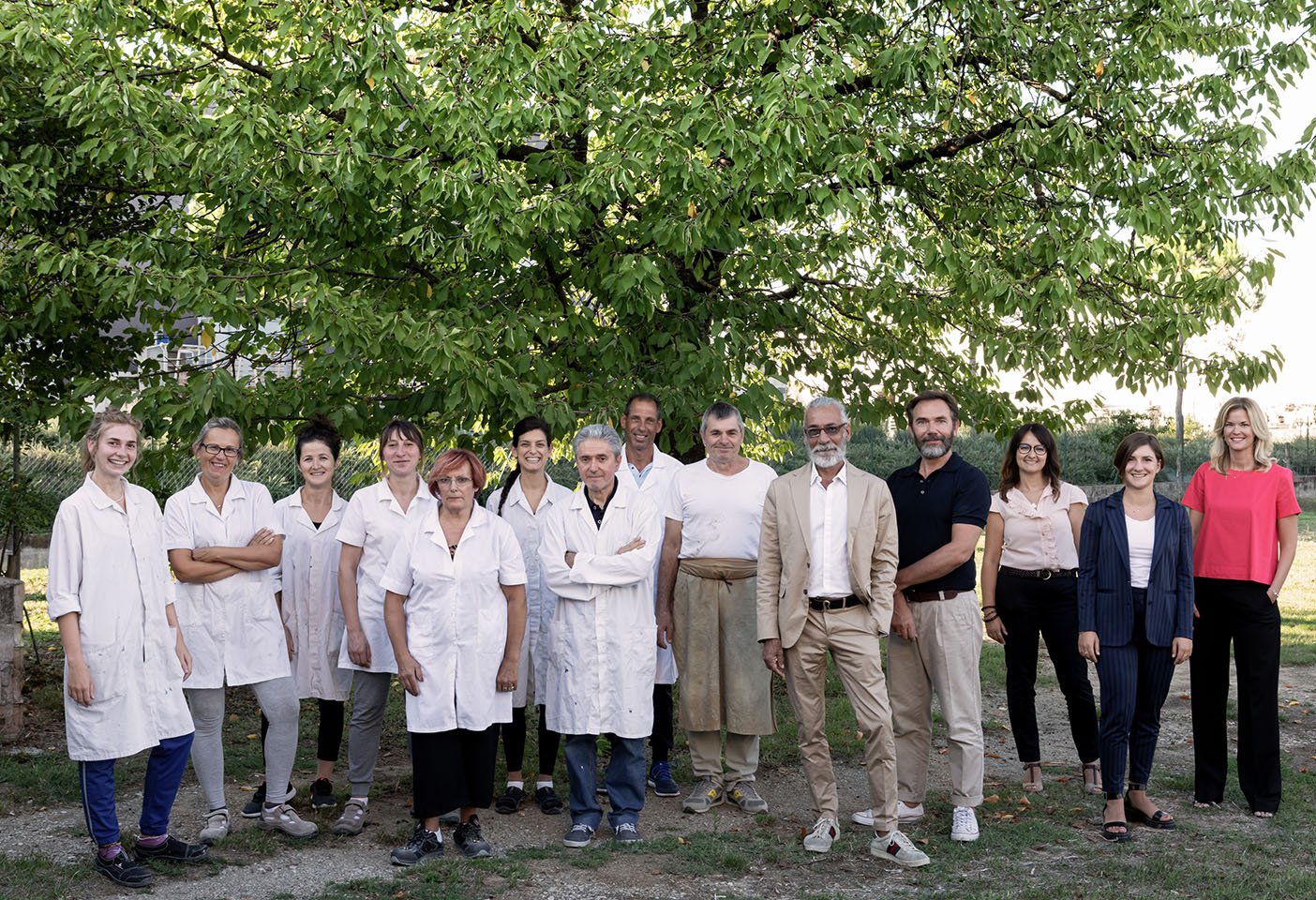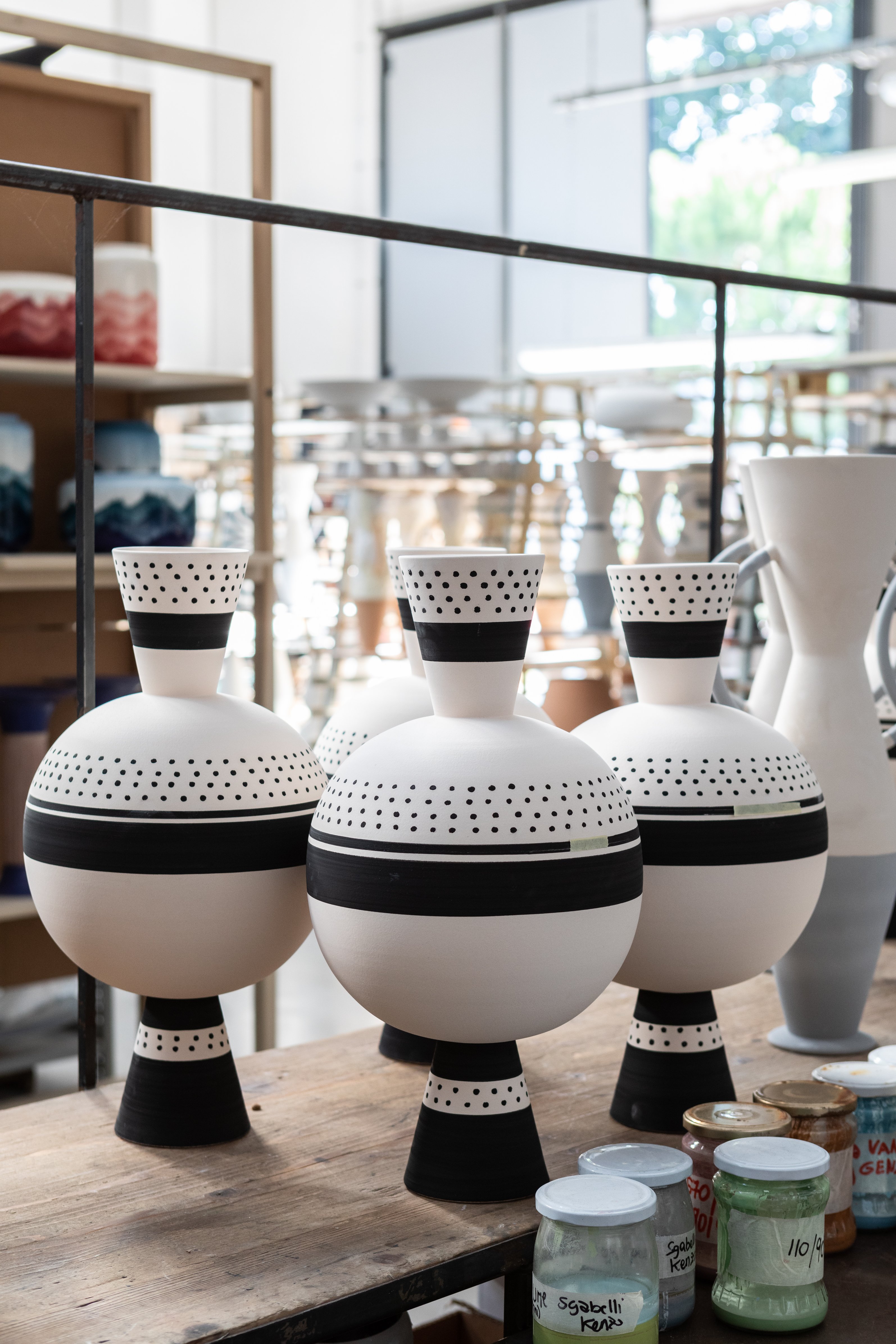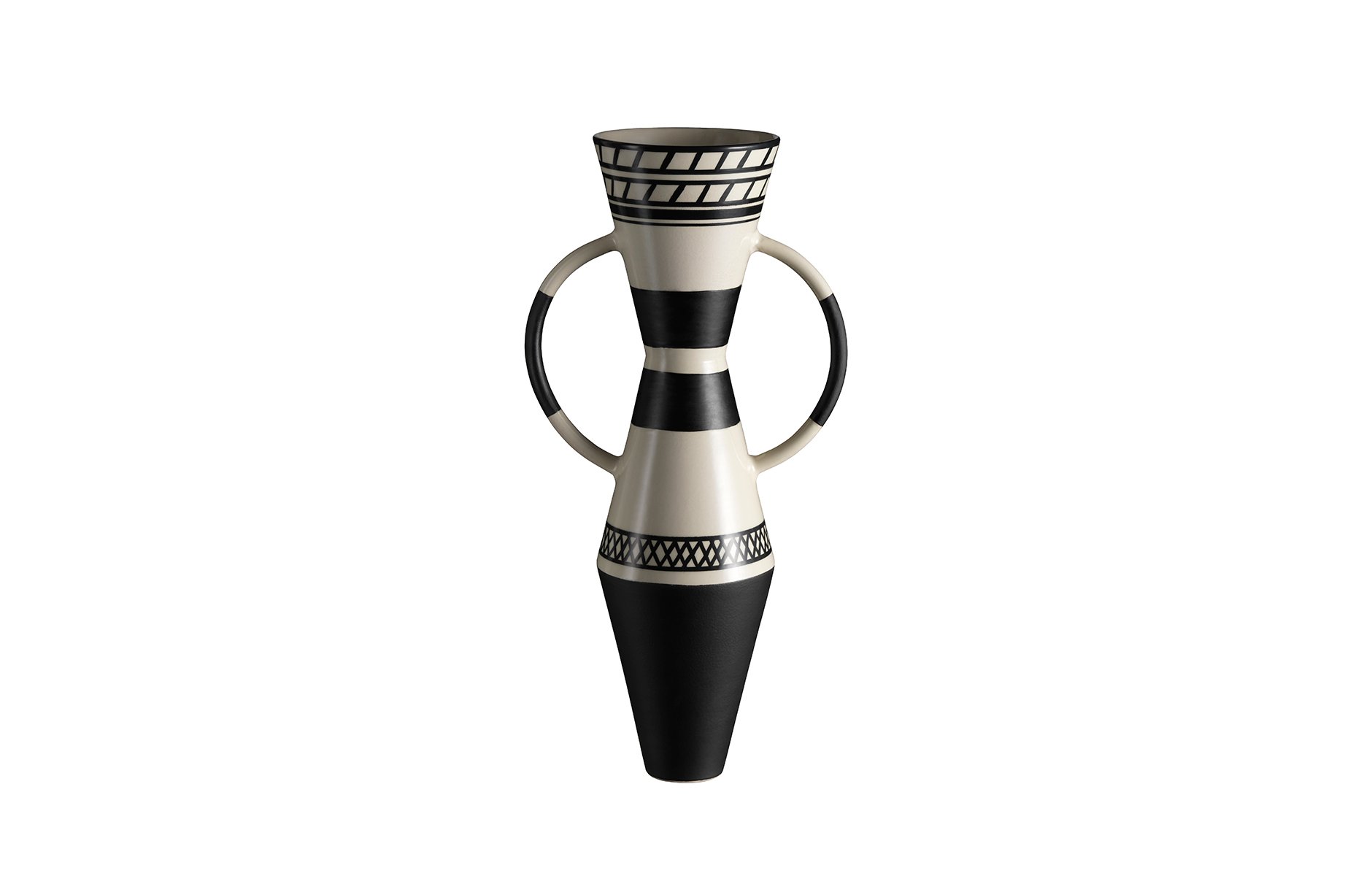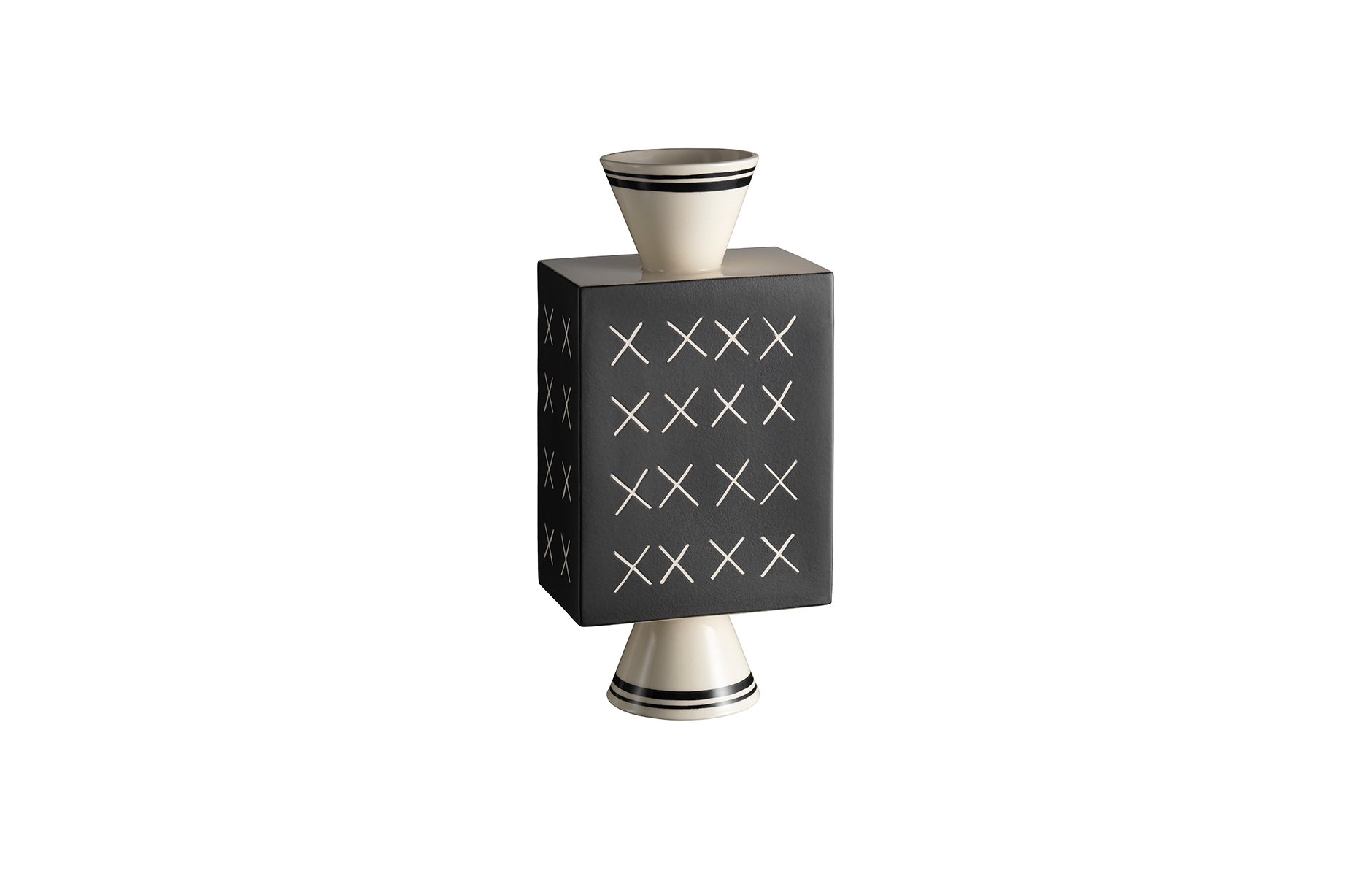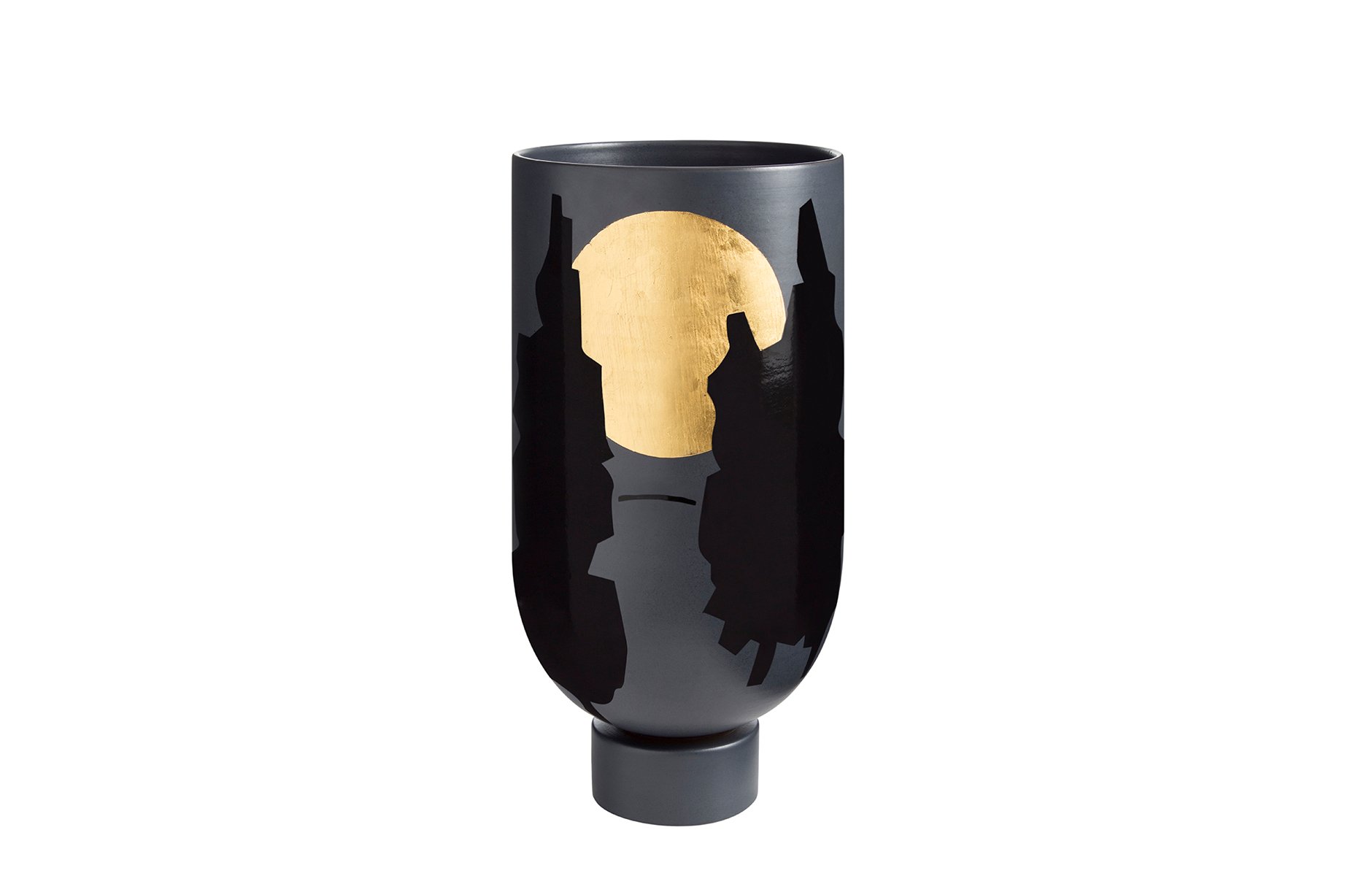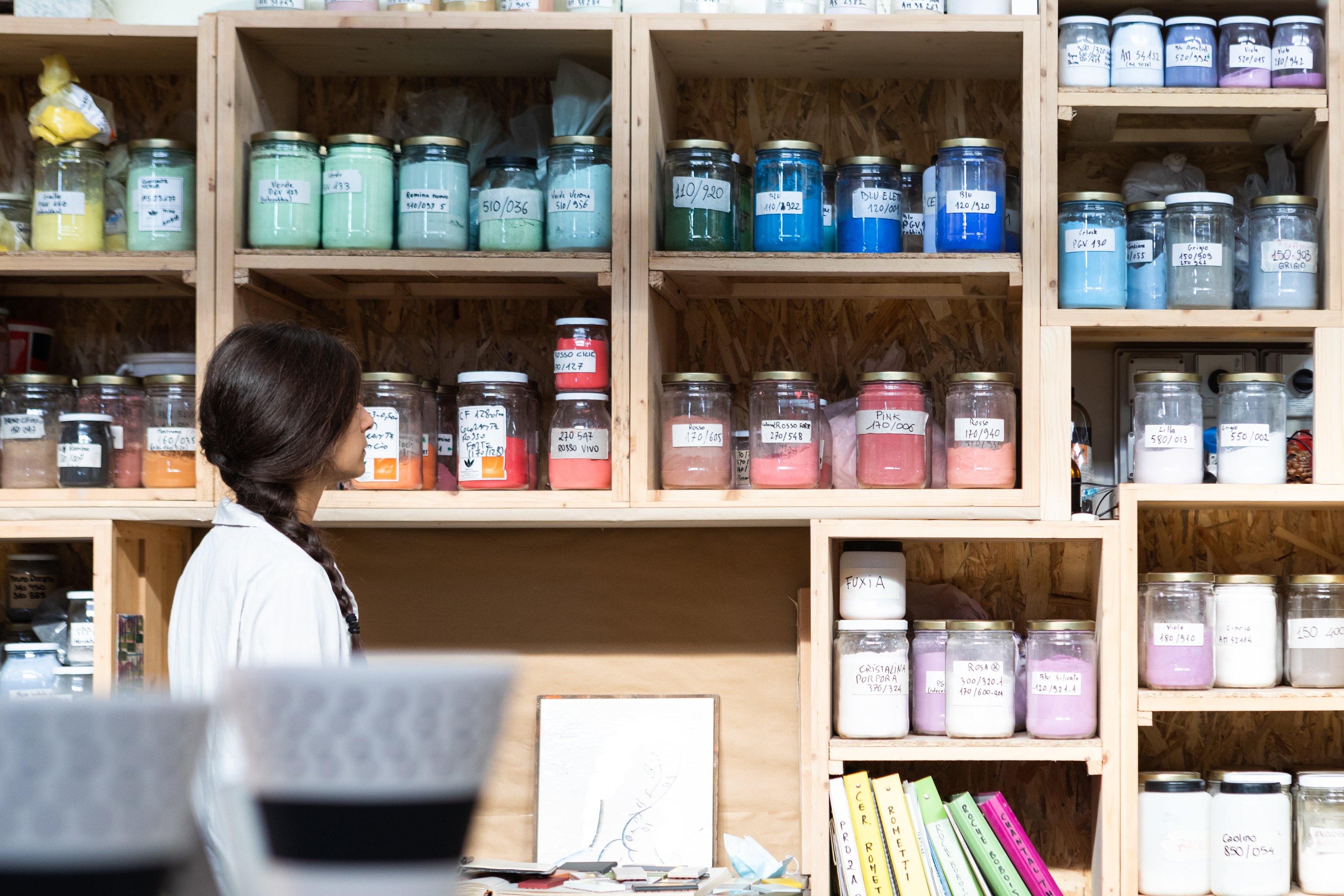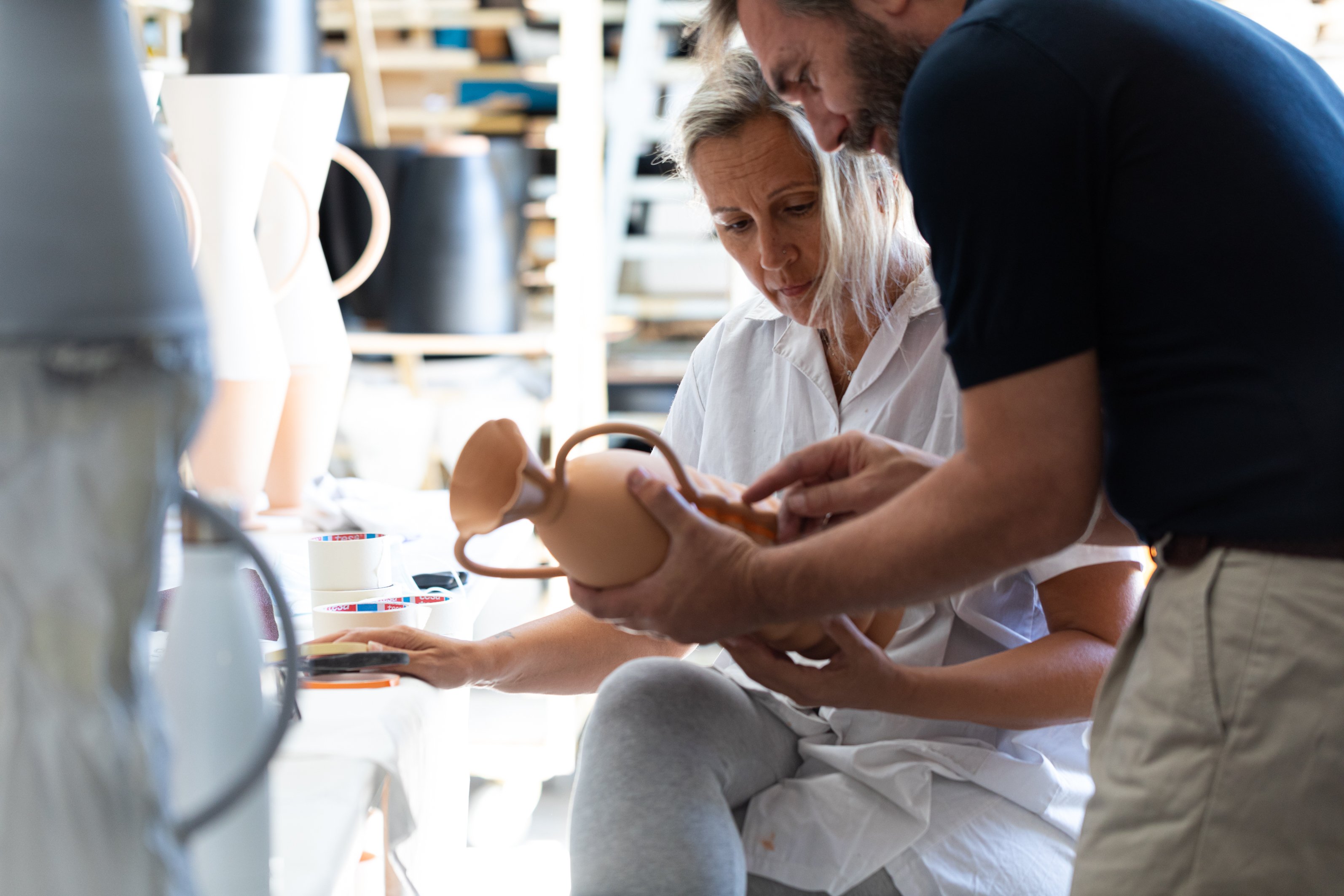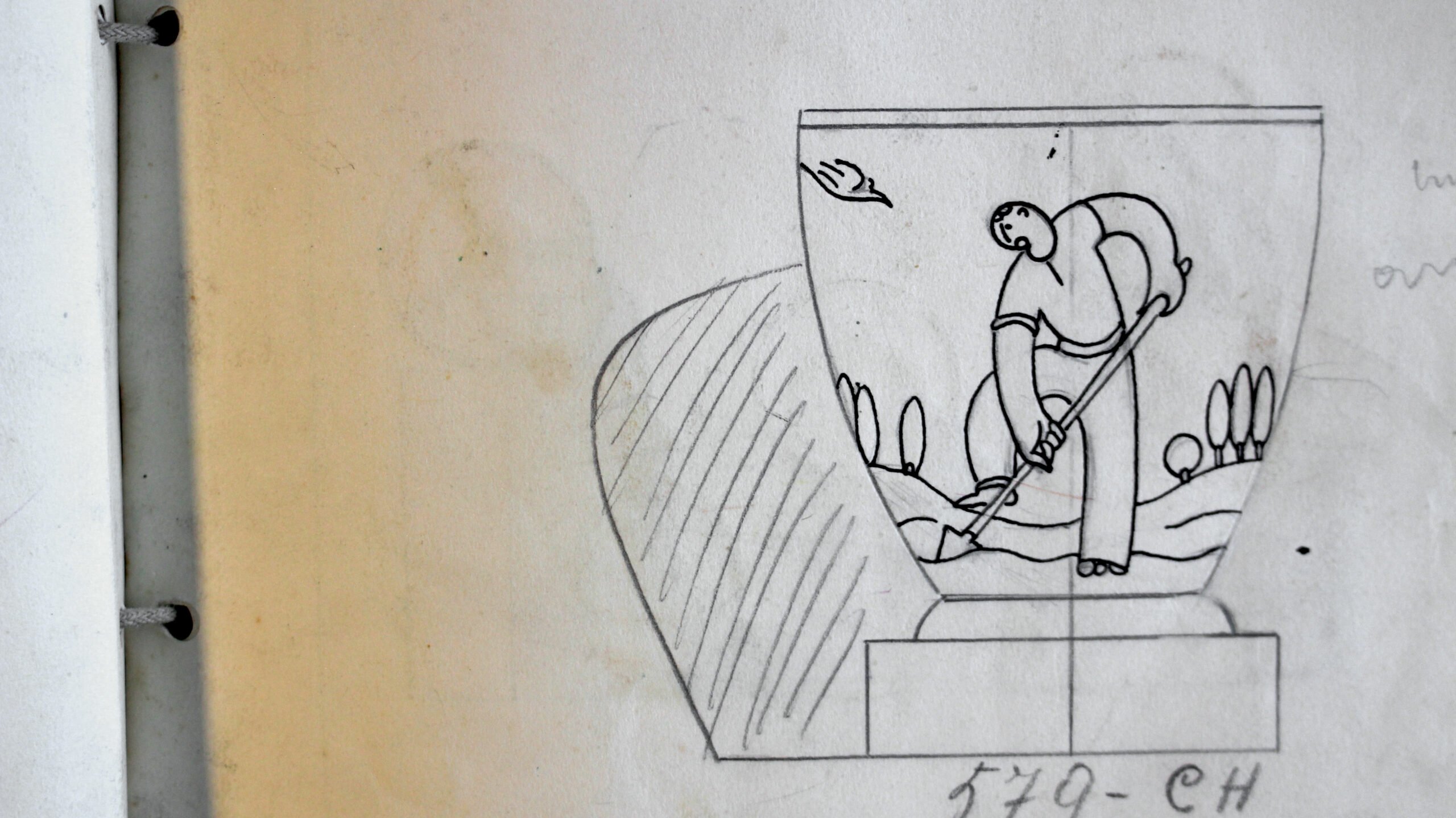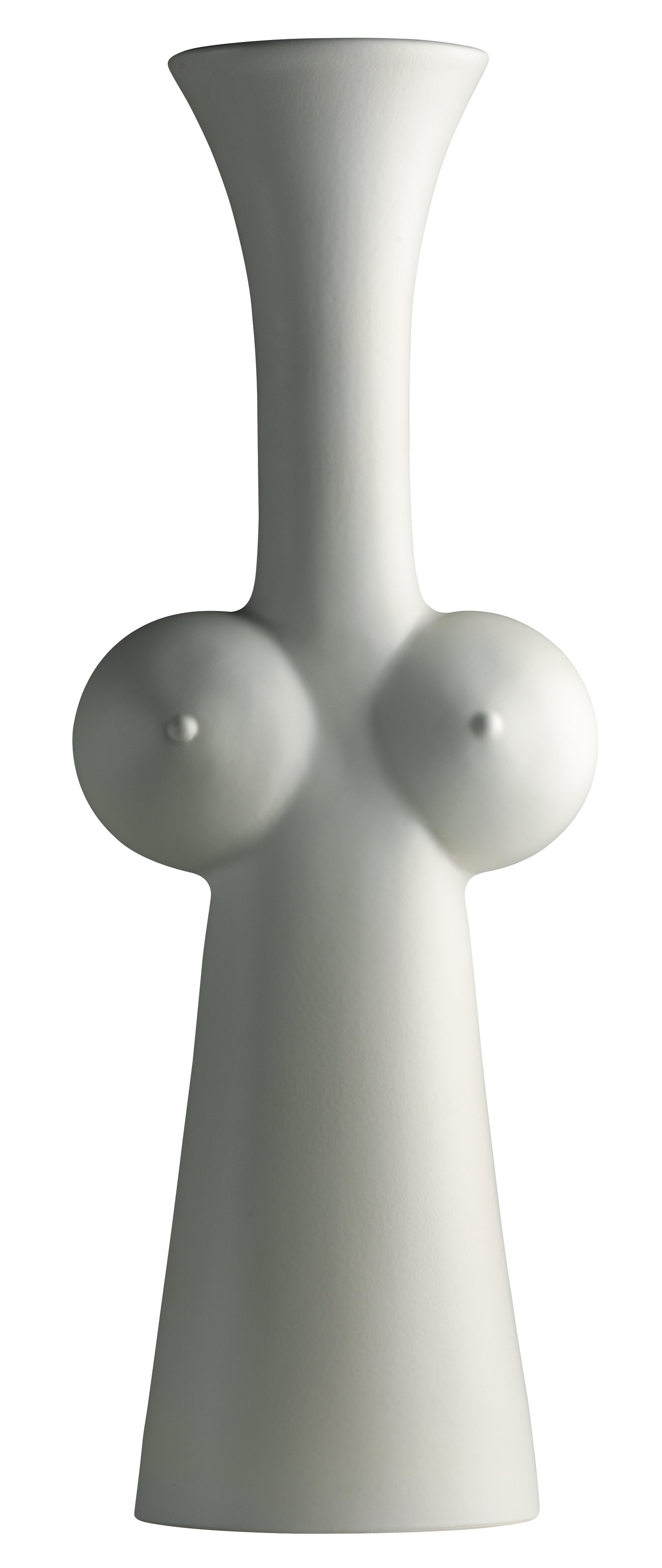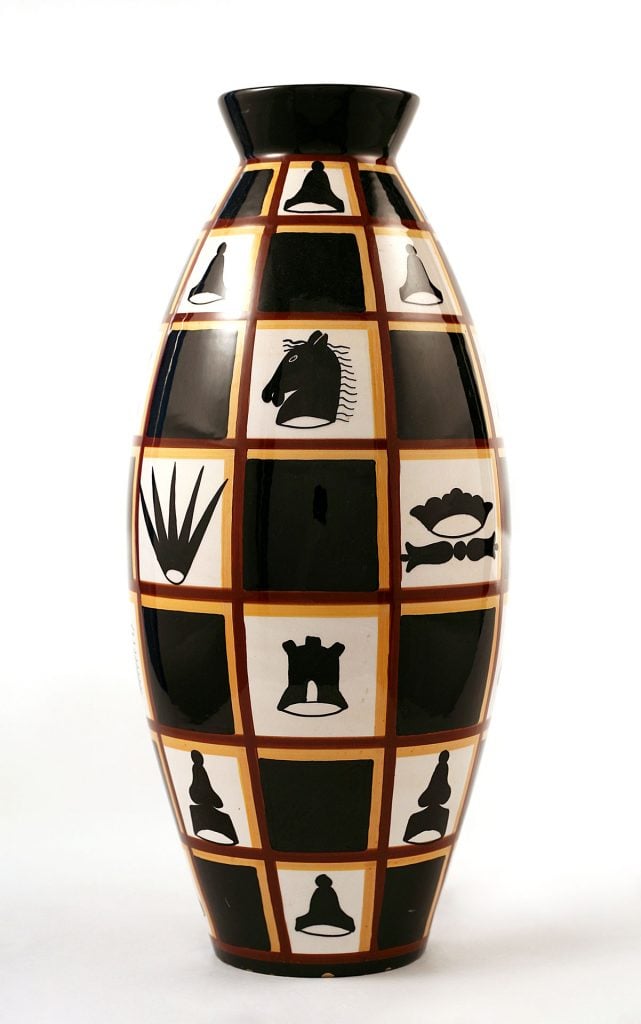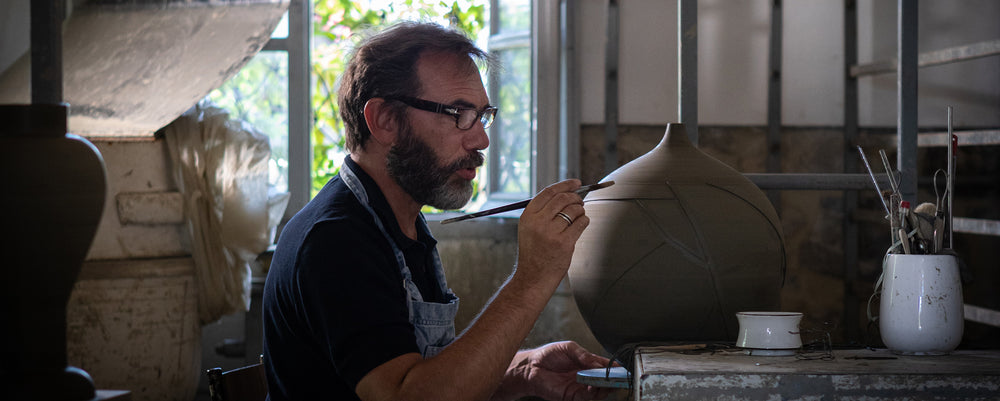
Born and raised in Umbertide, a small town “immersed in the Umbrian countryside, among woods, streams and medieval walls,” since 1927 the Italian ceramics studio Rometti has adapted and re-formed artisan practice, shaping ancient clay with bold expressiveness and opening up the studio to visiting artists from around the world.
In his book New Wave Clay, London-based design writer Tom Morris describes the inventive designers rediscovering the ancient craft of ceramics. "Clay objects offer a warmth, opacity, tactility and depth that counteract the glassy, transparent austerity of a world full of technology," he writes. What Morris is identifying is the draw of ancient materials and the stories embedded within them. Sparked in part by the beauty found in the slow, methodical hand-thrown process and the appeal of imperfection, but also the tactile connection to clay itself, a medieval material that has been used to form objects of both function and beauty for thousands of years.
The Rometti studio in Umbria was founded in 1927 during the heady days of artistic expression, as artists explored the social and avant-garde in movements like Futurism and Cubism. That new freedom would provide a way of re-interpreting and enhancing the potential of ceramics and take the breadth of artisan skills within the Rometti studio to the international stage. From the start, Rometti aimed to boost appreciation for Italian ceramic art. The clay, from a local quarry near the Tiber River dates back to the 9th century BC, and objects are finished with a glaze first developed by the Romans in 3,000 BC. The glaze adds depth and decoration to the clay and allows the studio to experiment with complex techniques, and together they tell the story of Umbria's ancient craft.
"From the first minute of the company's life, Rometti pieces were artistic and political manifestos. They have the expressive power of the cultural currents of the period and, they have something to say, which is fundamental for contemporary art", remarks Rometti’s CEO Massimo Monini who describes himself not as an artist, but "an imaginative aesthete". In 2009 it was Monini’s love of ceramics, craftsmanship and local traditions that led him to the Umbrian countryside and the ceramics studio of Rometti to purchase The Venere by Ambrogio Pozzi, and three years later he also bought the company.
“Umbertide is a mixture of fascinating cultures, which have been stratified over the centuries forming a unique combination", Monini explains. "Roots set from the first Umbrian people, Roman settlements and Etruscan finds are elements that still leave their mark on the preserved culture in this ancient fortress. The artistic manufacturing traditions are values that are part of the DNA of this place and the people who populate it. When Jean-Christophe and I discovered it during a moment of mental escape from tireless Paris, we fell in love with it.”
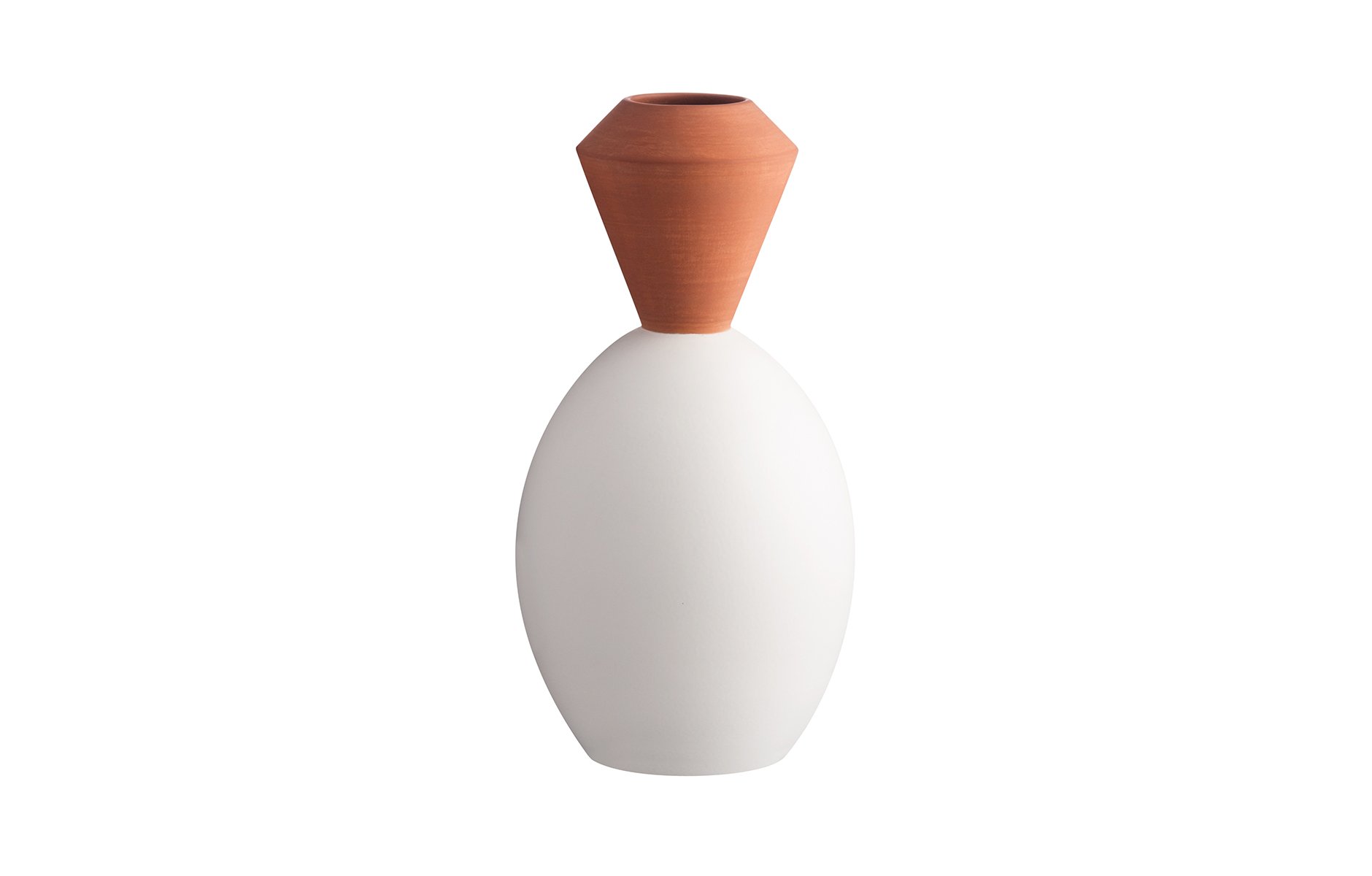
Handthrown with a waxed terracotta finish and matt white glaze, Rometti Lapsy is part of the Terakota collection designed by art director Jean-Christophe Clair. Photo c/o Rometti.

Also handthrown with a waxed terracotta finish and matt white glaze is Abakas from the Terakota collection by art director Jean-Christophe Clair. Photo c/o Rometti.
"For more than 20 years we have been collaborating with our potter, Bernardo Temperoni, who received the Masters of Art and Crafts Award last year. We work exclusively with local artisans, some of whom have been working with Rometti their entire careers."
Massimo Monini, Rometti
When More Space catches up with Massimo in Umbertide, he and Jean-Christophe are busy "revolutionising" the way they tell Rometti's story, digging into nearly 100 years of historical archives, their own lives and those of the artisans in the workshop, and celebrating what they describe as the "charm of imperfection" through communications and photography, and a new round of collections and collaborations with international designers.
In the following interview, we chat with Massimo about Umbria, Rometti and the ancient Roman clay that shapes everything they do, the studio’s skilled artisans, international fellowship, and the world’s new obsession with ceramics.
More Space: Hello Massimo, let’s start with a question about collectors. Is the growing interest in ceramics signalling a resurgence in artisan crafts?
Massimo Monini: Yes, absolutely! I believe we live in times of great artistic rebirth. More than anything, I see art growing as an essential individual need. I think we are in a great phase of cultural revolution, as were the avant-gardes of the early 1900s, the pop-artists of the 1950s and 1960s, and contemporary artists. There are so many more tools available now to increase our knowledge and growth, and for this reason art is ‘coloured’ with new voices and new channels. This could sound like the death of the ancient arts, but it is the opposite. It keeps them alive, enriches them and combines them with new elements. I see it in the eyes of young artists who attend art institutes all over the world and growing every year during the Rometti Award, a special recognition that offers an internship in our factory and gives an original contribution to ceramics.
"I believe that when artists see what we do with ceramics, they feel they are finding a new way to express themselves, and we help them do it."
Massimo Monini, Rometti
You are based in one of the most beautiful parts of Italy, the region of Umbria. How important is Rometti for Umbria and Umbria for Rometti?
I think Rometti would not exist without Umbria. To say that Umbria would not exist without Rometti would be a bit presumptuous! But if we think about what Rometti represents, if we think about how local craftsmanship has given a shape to regional art and culture that is recognised everywhere in the world, we realise that this is indeed the case. The relationship between manufacturing companies and the Umbrian territory is mutual, visceral, almost morbid, so much so that it is not always possible to distinguish the two levels. And it is not just a question of the use of raw materials, it is as if they were all connected by the land on which they walk. Interpreting its uses, movements, language and artistic thought is truly satisfying and at times mysterious and passionate. I think that in our pieces we are able to convey this energy which is both earthly and ancestral. A form of ritual dance that puts us in deep contact with nature. And I think that's what makes them so magical, at least for me.
Could you describe the artisans you work with?
For more than 20 years we have been collaborating with our potter, Bernardo Temperoni, who received the Masters of Art and Crafts Award last year. We work exclusively with local artisans, some of whom have been working with Rometti their entire careers. It is important for us to contribute to the local area. Each collection is the result of perfect teamwork that starts from a sketch on a piece of paper and is completed once out of the kiln with the glazes created by our laboratory. The artisans here preserve the secrets of how to work the clay, and our aim is to preserve this savoir-faire and pass it on to future generations.
You have described the clay you use as dating back to Ancient Rome.
The Etruscan presence on the Upper Tiber plain dates back to between the 9th and 1st centuries BC. For all these centuries, the Sansepolcro quarries have kept the secrets of their pottery made with this clay and its unique characteristics that we still use today. We are talking about a communicative substance, formed by the alteration and decomposition of rocks caused by the runoff of rainwater and erosion. We treat it a bit like a language with which to express ourselves, but sometimes I think it is the clay that communicates through us. It uses the hands of the artisans who work it to tell its story of millions of years, cradled in hidden deposits under rivers and lakes.
In what ways does this define Rometti ceramics?
The clay from these Etruscan quarries has a perfect balance between plasticity and resistance, a combination that makes it extraordinary for artistic work. To enhance the history of this material we have brought back to life a technique that was going towards extinction, with only a few craftsmen still able to honour it. The pieces created with this technique are shaped around a central axis and the special bond that is created between the art director and the turner is fundamental. I would say that the different feel of our ceramics is a question of ties. Ties between us, between our dreams, between the artisans, between the territory and the materials we hold in our hands and hearts.
What are the defining pieces from Rometti’s early days?
The pieces made by Cagli and Baldelli from the early 1930s that honour simple but noble professions. There are two particular vases that are still sought after today: Scacchi by Baldelli and Marcia Su Roma by Cagli. Their techniques and mastery are still the basis for us.
Your studio has collaborated with artists from around the world, from Kenzo Takada to Chantal Thomass and Ugo La Pietra. What interests you in that cross-cultural exchange?
Rometti has made this multifaceted nature its distinctive trait, and it is what makes our work unmistakable. We like change, even when it comes with a risk. Our production has within it a thousand souls, points of view, different shapes and colours, inspirations that bring together opera, classical Greece, Japanese harmony and the ironic irreverence of French designers. We like art. And art is nothing if not the intimate expression of a person's artistic thought. I believe that when artists see what we do with ceramics, they feel they are finding a new way to express themselves, and we help them do it.
Finally, what are some of your favourite pieces from the collection?
Firstly, The Venere by Ambrogio Pozzi. If it wasn’t for my purchasing two of these pieces we wouldn’t be here now. Another is the Baccanti collection by Rometti’s Art Director Jean-Christophe Clair. It reflects our DNA, while at the same time has modern forms and shapes.
Thank you for your time Massimo. It was wonderful to speak with you.
Rometti is exclusively available in South East Asia from Space – Australia – and Space – Singapore and Kuala Lumpur.


